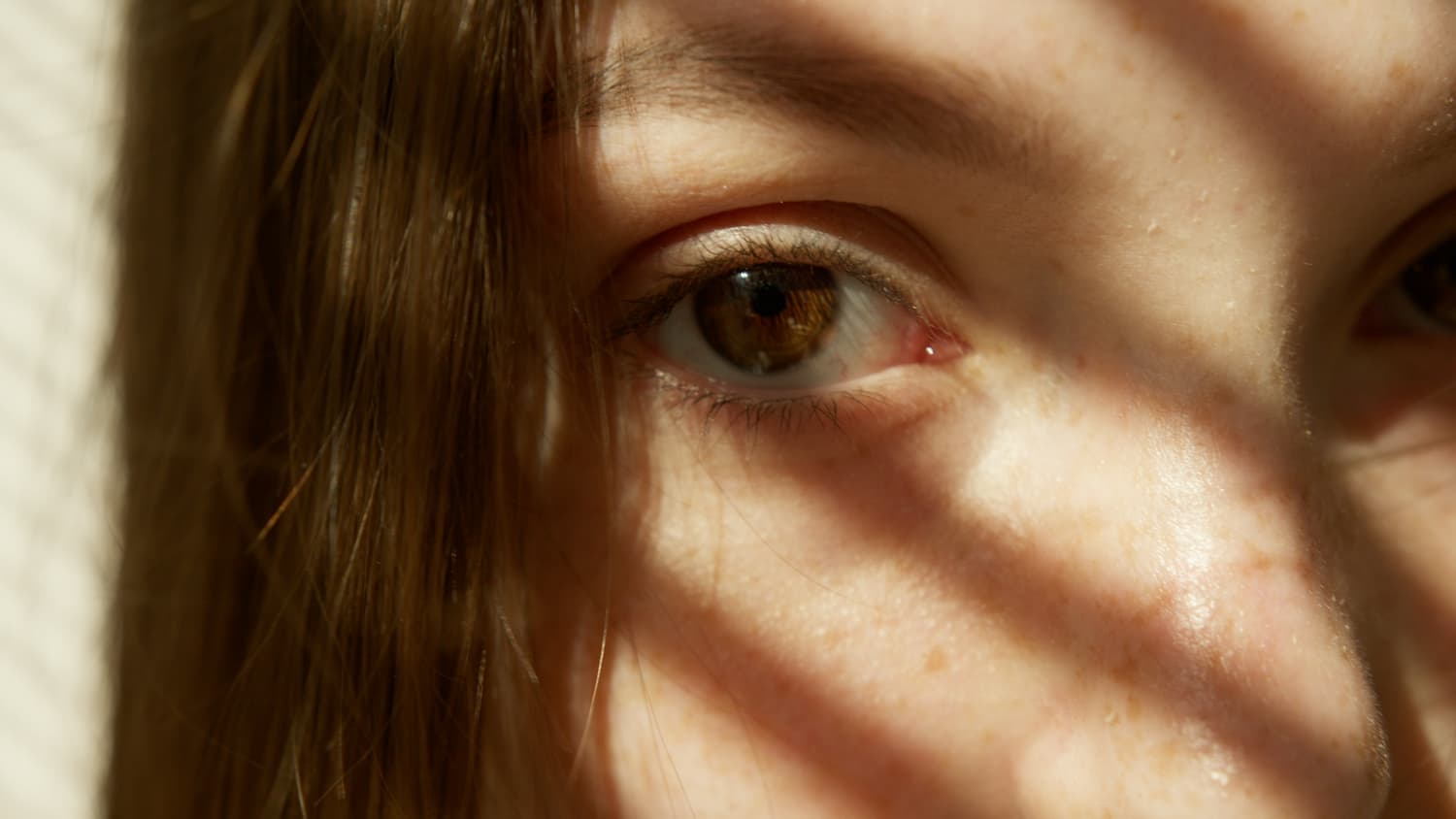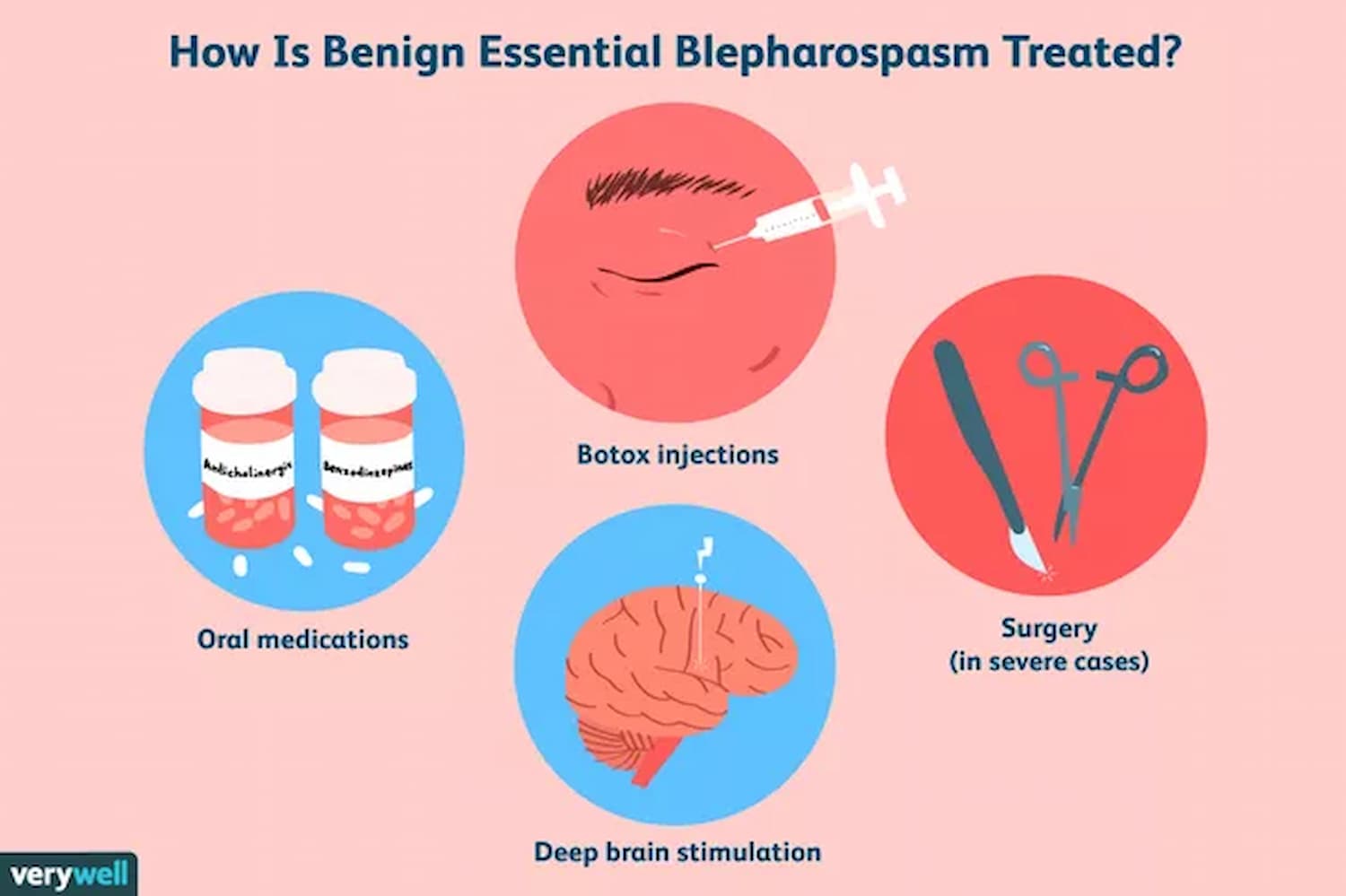
Blepharospasm, also known as benign essential blepharospasm, is an eye condition characterised by the involuntary muscle contractions of the eyelid. The eyelid may close tightly or blink excessively. Blepharospasm usually begins gradually and worsens with time. It may be intermittent, occurring only occasionally at first, but it can become chronic and constant over time. Read on to find out what causes it, the common symptoms of blepharospasm, and what should be considered in the treatment of blepharospasm.
What Causes Blepharospasm?
The exact cause of blepharospasm is unknown, but it is thought to be related to abnormal activity in the brainstem. Considered a type of cranial dystonia, or the involuntary movements of the muscles in the face, jaw or tongue, blepharospasm occurs when the nerve cells in the brain that are responsible for controlling the eyelid muscles cease to function properly. There are many factors that can contribute to eyelid spasms, including stress, fatigue, bright light and wind.
Age can also be a risk factor for blepharospasm, as does gender. According to research, women between the ages of 40 and 60 are more likely to develop this condition. The likelihood of developing eye spasms is thought to be influenced by genetic factors as well. Most patients with eyelid twitches have a parent or sibling who has been diagnosed with benign essential blepharospasm, according to studies.
What Are the Signs of Blepharospasm?
There are no set symptoms associated with blepharospasm. Although an eyelid spasm may be a telltale sign of benign essential blepharospasm, it could also be a symptom of another health condition such as Tourette's syndrome, migraine or blepharitis. Typical signs of blepharospasm, however, include:
- Excessive blinking
- Minor eyelid twitch
- Hemifacial spasm or the involuntary twitching of other facial muscles
Blepharospasm can be either intermittent or chronic. Additional symptoms, such as forceful squeezing of the eyes that pull the brows towards the eyes, may appear as the disease progresses. The eyes also become extremely sensitive to light.
How Is It Diagnosed?
A physician will usually diagnose blepharospasm through a combination of medical history and physical examination. They will enquire about the symptoms and how long they have been present. They will also examine the eyes and facial muscles.
Additional tests may be ordered in some cases to rule out other conditions with similar symptoms. Imaging studies or electromyography (EMG), which measures electrical impulses in response to facial nerve stimulation, may be included in these tests.
What Are Effective Treatments for Blepharospasm?
There is no cure for blepharospasm, but there are treatment options to consider in order to manage, prevent and treat severe spasms. Doctors usually prescribe oral medications to provide patients with temporary relief. Long-term use of psychotropic medication or other prescriptions should be avoided because they can result in a slew of side effects, including:
- Dizziness
- Headache
- Constipation or diarrhoea
- Fatigue
- Drowsiness
- Blurry vision
- Muscle weakness
- Cardiovascular disease
- Sleep disorders
Botulinum toxin injections are considered effective treatments by people who notice an improvement in the symptoms of their benign essential blepharospasm. The most common side effects of this type of treatment are dry eyes, drooping eyelids and double vision. The majority of patients complain of blurred vision after treatment. This is due to the drying of the tear film on the cornea. Eye drops are usually prescribed by doctors for patients who receive an injection of botulinum toxin.
Source: verywellhealth
What Natural Therapies Can Treat or Prevent Blepharospasm?
Specialists in eye health believe that preventing blepharospasm is preferable to treating it. Several natural therapies may aid in the treatment or prevention of blepharospasm, such as the following:
Massage Therapy
A massage therapist can help improve the quality of life for people with blepharospasm by relaxing the eye muscles, which may be one of the contributing factors to blepharospasm. Massage can also help to increase circulation in the area, which can help to reduce inflammation and tension. Gentle strokes around the eye area can also relieve trigger points, which can help to alleviate symptoms.
Acupuncture Treatments
By stimulating specific points on the body known as acupoints or pressure points with fine needles, an acupuncturist can help to release muscle tension and promote healing. In addition, acupuncture can help to improve circulation and reduce inflammation.
Proper Nutrition
Certain foods that can help with blepharospasm, particularly those that are packed with omega-3 fatty acids, such as salmon, tuna, mackerel, flaxseeds and chia seeds. These can help to reduce inflammation and keep the muscles relaxed. Combining healthy food with lots of water is a must. Staying hydrated is important for overall health and can also help prevent eye twitching.
Vitamins and Minerals
There are some vitamins that can help with blepharospasm, including vitamin B12 and magnesium. Vitamin B12 is important for nerve health, and deficiencies have been linked to blepharospasm. Magnesium is a natural muscle relaxant, so it can help reduce the frequency and severity of spasms.
Relaxation Techniques
Progressive muscle relaxation, yoga and meditation are all examples of relaxation techniques that may be beneficial for people with blepharospasm. All of these can help to reduce stress and muscle tension, which are major contributors to the condition.
If you have a family history of blepharospasm or other movement disorders, it is critical to change your daily routine and incorporate healthy lifestyle habits. In addition to avoiding stress, make sure you get enough sleep and avoid eye strain. Take frequent breaks and blink frequently if you work at a computer.
Finally, if you believe you are at risk for blepharospasm or are experiencing symptoms, contact your healthcare provider right away, because early intervention is critical to maintaining eye health and overall wellness.










